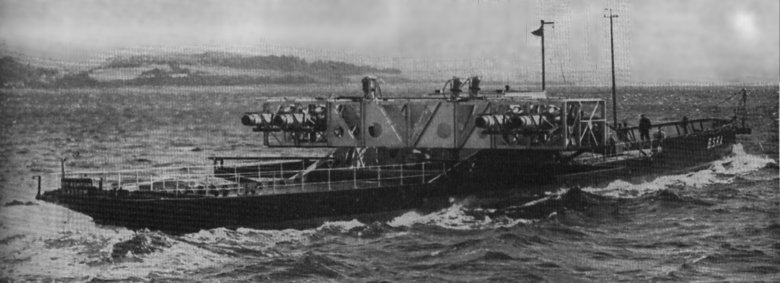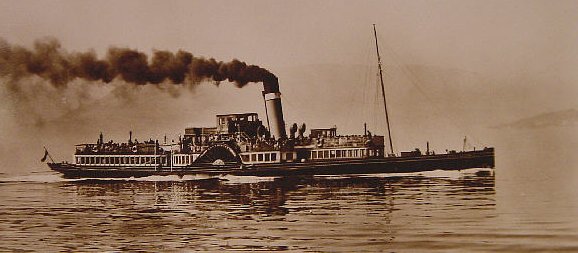Gallery opened April 2002
Last update: 30 June 2003
Updated 3 Jan 2020
More info




The Jet-Propelled Paddle Steamer Lucy Ashton |
Gallery opened April 2002 |
 | Left: The Lucy Ashton in with four jet-engines installed: 1951
|
The Lucy Ashton is a unique example of a jet-engine-powered paddleboat; to be more strictly accurate, ex-paddleboat, because the paddles were removed before the jet engines were installed.
The Lucy Ashton was originally a 271-ton Clyde paddle steamer. She was launched on 24 May 1888, and remained on the Clyde throughout both world wars. At the time of her retirement in 1949 she was the oldest railway steamer on the Clyde. The original power was provided by a single-cylinder 150 HP steam engine. This was replaced with a 2-cylinder compound engine by A & J Inglis of Pointhouse, Glasgow in 1902.
The vessel was intended to be scrapped on retirement, but instead the hull was purchased by the British Ship Research Association, being converted in 1950/51 to research the causes of drag and friction on a full-scale ship hull in real-life conditions. It appears full-scale resistance trials had only once been done before, the towing tests on HMS Greyhound in 1874, though there had been much work done with models by luminaries such as William Froude.
This is why the jet engines were used- there was no propellor and shaft to influence the results, and it was relatively easy to measure the thrust applied to the hull by measuring the forces on the jet engine mountings. In contrast, the thrust from a conventional propellor is passed to the hull via thrust bearings which are relatively inaccessible and usually welded to the hull structure.
Lucy was powered by four Rolls-Royce Derwent V engines, giving a thrust of 3600 lb each at 14,500 rpm. Top speed is not known to me but was in excess of 15 knots. The noise levels were so high the control cabin had to be soundproofed by 60 dB. This was before the days of jet thrust-reversers, and there was no way to go backwards. To stop quickly in an emergency, large metal flaps were lowered from the outriggers to act as water brakes.
According to Marion Gillies, a local resident: “She sped up and down the Gareloch for two years, and the racket was unbelievable.”
The work done using the Lucy Ashton was of considerable importance. See this PhD thesis done at MIT, on the correlations between full-size and small-model tests on Lucy.
 | Left: This is the Lucy Ashton in her original form. Photograph 1939
|

The design of boats and yachts has changed dramatically over the years from being jet-propelled, like the Lucy Ashton, to having high-tech diesel engines. Today's Sport Fishing Boats can achieve incredible speeds of over 40 knots, which in 1951, would have been unachievable for paddle steam boats. |
So who was the original Lucy Ashton? Not (as I suspected) the mistress of a Clyde shipowner. You will meet her in the opera:
LUCIA DI LAMMERMOOR
by Salvatore Cammarano
Based on the novel The Bride of Lammermoor by Sir Walter Scott
music by Gaetano Donizetti
DRAMATIS PERSONÆ
Lord Henry Ashton [Sir Enrico]
Lucy Ashton, his sister [Lucia]
Sir Edgar, Master of Ravenswood [Sir Edgardo]
Sir Edgardo? You must be joking...
  
|